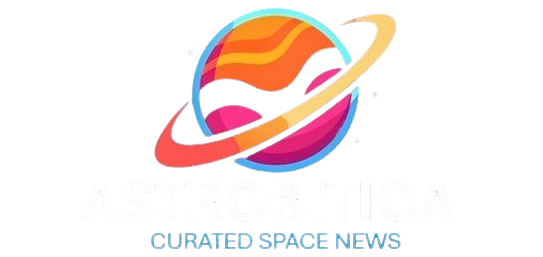Xplore reveals hyperspectral imagery from first satellite

SAN FRANCISCO – Xplore Inc. unveiled hyperspectral imagery from XCUBE-1, the initial satellite in the Bellevue, Washington, startup’s remote-sensing constellation. Since XCUBE-1 was launched in December, Xplore has “built the […] The post Xplore reveals hyperspectral imagery from first satellite appeared first on SpaceNews.
Chinese spacecraft prepare for orbital refueling test as US surveillance sats lurk nearby
Live coverage: SpaceX to launch 23 Starlink satellites on a Falcon 9 rocket from Cape Canaveral

File: A SpaceX Falcon 9 rocket stands at Space Launch Complex 40 (SLC-40) ahead of the launch of the Starlink 12-18 mission. Image: Adam Bernstein/Spaceflight Now SpaceX is preparing to launch a Falcon 9 rocket with its latest batch of Starlink V2 Mini satellites into low Earth orbit on Tuesday morning. The mission, dubbed Starlink 12-24, is scheduled to liftoff from Space Launch Complex 40 at Cape Canaveral Space Force Station at 9:05 a.m. EDT Continue ReadingLive coverage: SpaceX to launch 23 Starlink satellites on a Falcon 9 rocket from Cape Canaveral
Star Trek Strange New Worlds Season 3 trailer promises new worlds, new adventures, and new romances (video)

The Enterprise crew launches into more bold sci-fi encounters starting July 17, and Paramount just dropped a new trailer and a bunch of posters for fans. Continue ReadingStar Trek Strange New Worlds Season 3 trailer promises new worlds, new adventures, and new romances (video)
Smokey aurorae

Marty Weintraub from Duluth, Minnesota Aurorae shimmer on the night of May 28/9 over Lake Saganaga in Minnesota, near the Canadian border. The photographer notes that wildfire smoke caused the aurorae to take on a “fuzzy, diffuse” appearance — even though the image itself is sharp with pinpoint stars. A Sony mirrorless camera and 14mm lensContinue reading “Smokey aurorae” The post Smokey aurorae appeared first on Astronomy Magazine. Continue ReadingSmokey aurorae
June’s Strawberry Moon rises tonight. Here’s what to expect from the lowest full moon since 2006

Catch the full moon rise over the southeastern horizon on June 10. Continue ReadingJune’s Strawberry Moon rises tonight. Here’s what to expect from the lowest full moon since 2006
An Indian astronaut is about to visit the ISS for the 1st time ever

An astronaut from India is set to launch to the International Space Station on the Ax-4 mission on June 11, marking a first for the nation. Continue ReadingAn Indian astronaut is about to visit the ISS for the 1st time ever
The Sky Today on Tuesday, June 10: The Moon meets Antares

The Moon passes 0.3° south of Antares at 7 A.M. EDT. You can catch them early this morning, when they are highest in the south just after midnight on the 9th. The Moon’s bright light dominates the southern sky as our satellite quickly waxes toward the Full phase, which it will reach in just overContinue reading “The Sky Today on Tuesday, June 10: The Moon meets Antares” The post The Sky Today on Tuesday, June Continue ReadingThe Sky Today on Tuesday, June 10: The Moon meets Antares
The Nuclear Option: Europe’s Plan for Faster Space Travel.
This Map of the Cosmic Web Reaches Back in Time
Quebec backs Canadian launch startup Reaction Dynamics and partner Maya HTT

SAN FRANCISCO – Quebec’s government announced an award of $10 million Canadian dollars ($7.3 million) to Canadian rocket startup Reaction Dynamics and software developer Maya HTT. The funding will enable […] The post Quebec backs Canadian launch startup Reaction Dynamics and partner Maya HTT appeared first on SpaceNews.
US rural broadband shift opens door wider for Starlink

The Trump administration has released new rules for distributing $42.5 billion in U.S. rural broadband funding, easing restrictions on Starlink and other satellite providers competing for support under the Biden-era program. The post US rural broadband shift opens door wider for Starlink appeared first on SpaceNews.
Lowell Observatory faces big challenges

I spent part of last week in one of my favorite places, Flagstaff, Arizona, at Lowell Observatory. This storied institution is well known, and as I have written about previously, holds a unique place in the history of American science. Founded in 1894 by the Boston explorer and scientist Percival Lowell, the institution presents aContinue reading “Lowell Observatory faces big challenges” The post Lowell Observatory faces big challenges appeared first on Astronomy Magazine. Continue ReadingLowell Observatory faces big challenges
NASA raises the odds that an asteroid could hit the moon in 2032

Asteroid 2024 YR4, once the highest impact risk ever recorded, now poses no threat to Earth but has a slightly increased chance of striking the moon in 2032. Continue ReadingNASA raises the odds that an asteroid could hit the moon in 2032
NASA’s Top 5 Technical Challenges Countdown: #2: More Power
As it happened: ispace makes second attempt at historic Moon landing
[embed]https://youtube.com/watch?v=BVSMXQPeTcw&si=zbrlCApLStdlnFjt[/embed] A Japanese startup was hoping that the second time will be the charm as it targets a landing on the surface of the Moon Thursday afternoon. Read through our live blog for the latest updates on the landing attempt for ispace and its Resilience lander as they happened. Continue ReadingAs it happened: ispace makes second attempt at historic Moon landing
ispace’s Resilience lander crash lands on the Moon

The ispace Resilience lunar lander is pictured after it was integrated into the SpaceX Falcon 9 launch vehicle adapter about a week ahead of its launch on Jan. 15, 2025. Image: SpaceX via ispace In a horrible case of deja vu, Japan-based company ispace got to the finish line with its robotic lunar lander, but was unsuccessful in safely touching down on the Moon’s surface. The landing attempt came about 4.5 months after the lander Continue Readingispace’s Resilience lander crash lands on the Moon
SpaceX launches SXM-10 satellite for SiriusXM on Falcon 9 rocket from Cape Canaveral

SpaceX launches its Falcon 9 rocket on June 7, 2025 at 12:54 a.m. EDT (0454 UTC) in support of the SXM-10 mission from Space Launch Complex 40 at Cape Canaveral Space Force Station. Image: Michael Cain/Spaceflight Now Update June 7, 1:47 a.m. EDT: SpaceX confirmed deployment of the SXM-10 satellite. SpaceX launched its first customer mission of the month shortly after midnight on Saturday morning with a Falcon 9 flight heading to a geosynchronous transfer Continue ReadingSpaceX launches SXM-10 satellite for SiriusXM on Falcon 9 rocket from Cape Canaveral
Further delays of Starliner’s next flight mark anniversary of its first crewed Space Station docking

The Boeing Starliner spacecraft is lifted at the Vertical Integration Facility at Space Launch Complex-41 at Cape Canaveral Space Force Station in Florida on Tuesday, April 16, 2024. Image: NASA/Kim Shiflett One year ago today, Boeing’s CST-100 Starliner spacecraft docked with the International Space Station to begin its long-awaited Crew Flight Test with NASA astronauts Sunita “Suni” Williams and Barry “Butch” Wilmore onboard. A year later, the future of the Starliner program remains uncertain as Continue ReadingFurther delays of Starliner’s next flight mark anniversary of its first crewed Space Station docking





